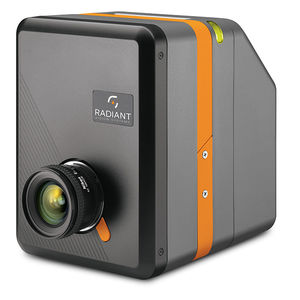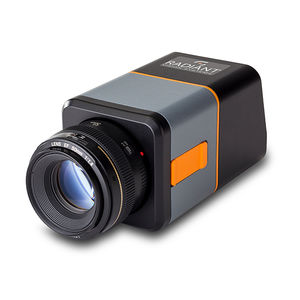
- Production - Materials - Metrology
- Test equipment - Metrology
- Objective lens
- RADIANT VISION SYSTEMS

- Products
- Catalogs
- News & Trends
- Exhibitions
Wide-angle camera lens AR/VRhigh-resolution

Add to favorites
Compare this product
Characteristics
- Type
- wide-angle
- Other characteristics
- high-resolution
Description
The Radiant Vision Systems AR/VR lens has a unique optical design specially engineered for measuring near-eye displays (NEDs), such as those integrated into virtual (VR), mixed (MR), and augmented reality (AR) headsets. The lens design simulates the size, position, and field of view of the human eye. Unlike alternative lens options, where the aperture is located inside the lens, the aperture of the AR/VR lens is located on the front of the lens, enabling positioning of the imaging system’s entrance pupil within NED headsets to view head-mounted displays (HMDs) at the same location as the human eye.
Displays viewed near to the eye, such as those in AR/VR devices, create immersive virtual experiences. However, as display images are magnified to fill a user’s field of view (FOV), display defects are also magnified. Issues with uniformity of brightness and color, dead pixels, line defects, cloudiness, and image position become more evident to the user whose eyes are only centimeters away from display screens. In these cases, display quality testing is a critical step for product quality control. Test and measurement solutions for evaluation of NED quality include photometric imaging systems paired with software for luminance and chromaticity measurement and analysis. However, traditional optical components that measure displays like televisions and smartphones did not include design considerations for replicating the human eye’s view of visual input at the distances required for head-mounted display devices.
VIDEO
Catalogs
Other RADIANT VISION SYSTEMS products
Imaging Colorimeters & Photometers
Related Searches
*Prices are pre-tax. They exclude delivery charges and customs duties and do not include additional charges for installation or activation options. Prices are indicative only and may vary by country, with changes to the cost of raw materials and exchange rates.








